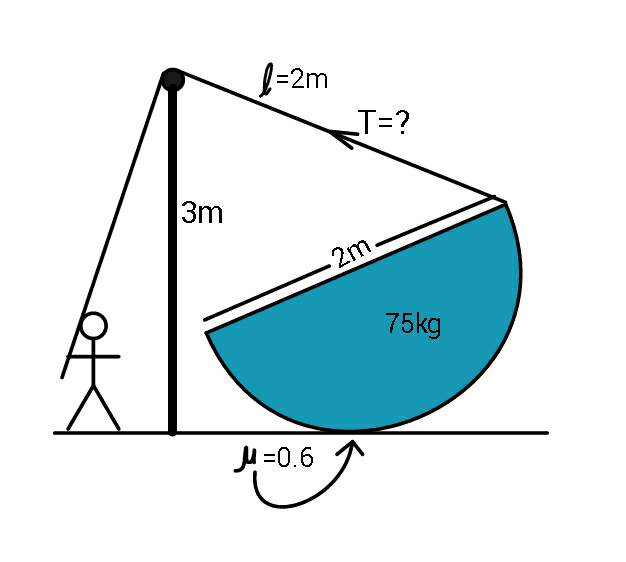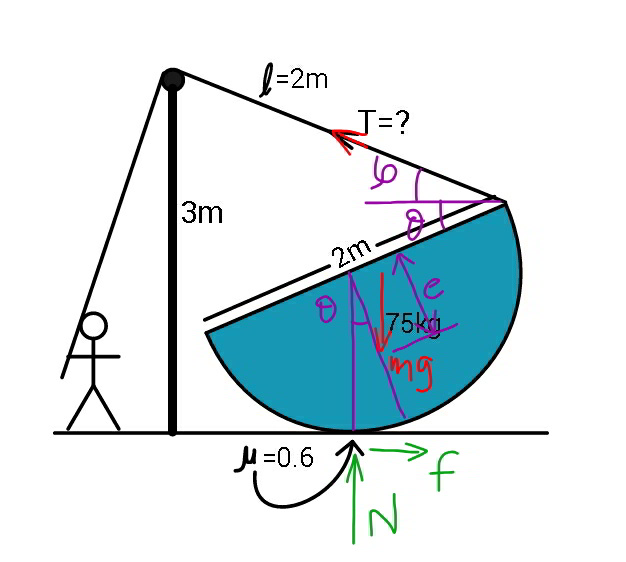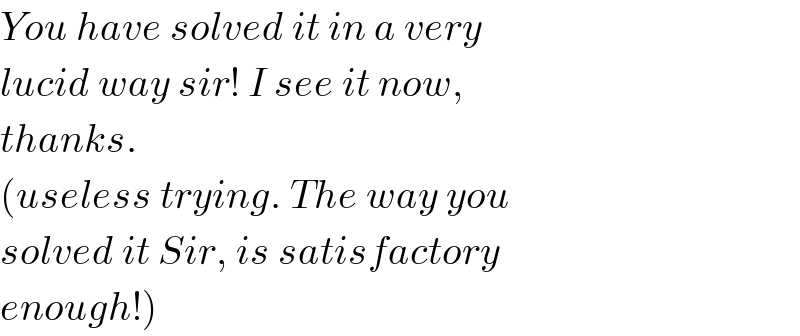
Question and Answers Forum
Question Number 81562 by ajfour last updated on 14/Feb/20

Commented by ajfour last updated on 14/Feb/20

Commented by mr W last updated on 14/Feb/20

Answered by mr W last updated on 14/Feb/20

Commented by mr W last updated on 15/Feb/20
![l sin ϕ+R sin θ+R=h 2 sin ϕ+sin θ+1=3 ⇒2 sin ϕ+sin θ=2 ...(i) N+T sin ϕ=mg ...(ii) T cos ϕ=f=μN ...(iii) T cos ϕ (R sin θ+R)+T sin ϕ R cos θ=mg e sin θ T [sin (ϕ+θ)+cos ϕ]=mg e sin θ ...(iv) ⇒sin θ=2(1−sin ϕ) T cos ϕ=μ(mg−T sin ϕ) T(cos ϕ+μ sin ϕ)=μmg ⇒T=((μmg)/(cos ϕ+μ sin ϕ)) ((μmg)/(cos ϕ+μ sin ϕ))[sin (ϕ+θ)+cos ϕ]=mg e sin θ ((μ{sin (ϕ+θ)+cos ϕ})/(cos ϕ+μ sin ϕ))=2e(1−sin ϕ) e=((3R)/8)=(3/8) ⇒((sin (ϕ+θ)+cos ϕ)/((cos ϕ+μ sin ϕ)(1−sin ϕ)))=(3/(4μ)) with θ=sin^(−1) [2(1−sin ϕ)] with μ=0.6 there is no solution possible. let′s say μ=0.2, we get ϕ≈30.3375° ⇒T=155.59 N ===================== μ=((3 cos ϕ(1−sin ϕ))/(4sin (ϕ+θ)+4cos ϕ+3 sin^2 ϕ−3sin ϕ)) ϕ→30° θ→90° μ<(3/(16−(√3)))≈0.21](Q81576.png)
Commented by ajfour last updated on 15/Feb/20

